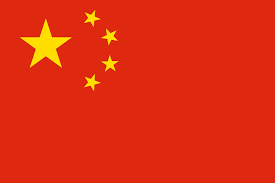Now in its twelfth year, Class 46 is dedicated to European trade mark law and practice. This weblog is written by a team of enthusiasts who want to spread the word and share their thoughts with others.
Click here subscribe for free.
Who we all are...
CNIPA issues guidance on trade mark classification
 On 29 December 2023, the China National Intellectual Property Administration (CNIPA) issued the Guidance on the Correct Understanding of Classification of Goods and Services for the Purposes of Trademark Registration. Ling Zhao and Shufang Zhang explain what it means in practice.
On 29 December 2023, the China National Intellectual Property Administration (CNIPA) issued the Guidance on the Correct Understanding of Classification of Goods and Services for the Purposes of Trademark Registration. Ling Zhao and Shufang Zhang explain what it means in practice.
The Guidance aims to help improve understanding of the purpose and the function of the official classification of similar goods and services of the China Trademark Office in determining similar goods and services in examination procedures. The Chinese version of the guidance can be accessed on CNIPA’s website.
The Guidance explains that the Chinese version of the Classification of Goods and Services is based upon the Nice Classification. It adds the names of goods and services commonly used in China, and develops the Chinese version of Classification of Goods and Services (the classification book).
The classification book is a major reference for judging similar goods and services in the examination of trade marks case by administrative and judicial authorities.
The Guidance provides the following basic rules on how the classification book is formulated and how it is used to determine similarity of goods and services in different procedures:
What is the subclass in the classification book?
Under the Classification, similar goods and services are put in the same subclass. The subclass system is an important reference in judging whether goods/services are similar. In most cases, goods and services falling into the same subclasses are considered similar, while those in different subclasses are not.
In some circumstances, not all goods or services falling in the same subclass constitute similar goods/services and the Classification further divides them into different parts according to the relations between goods/services.
In principle, goods/services in the same parts are similar, while for those that are not in the same parts, their similarity should be judged according to the explanations in the annotations.
For instance, in the subclass "1703 Rubber, resin, and fiber products", the goods are divided into four parts, and it is indicated in the subsequent annotation that the goods in different parts are not similar. There are also specific items of goods/services listed in some subclasses, the similarity of which should be judged according to the explanations in the annotations.
How to determine the similarity of goods and services not listed in the official classification book
The assessment of similarity of goods/services not covered by the classification book should be based on the general understanding of the relevant public and the function, usage, main raw materials, production sector, target consumers, sales channels and other factors of the specific goods, or the purpose, content, mode, object and place of the services.
Determining the similarity of goods and services in different examination procedures
In the examination of trade mark registration and refusal review cases, the classification book is in principle used as the basis for the judgment.
In the determination of the similarity of goods or services in trade mark opposition, review of opposition and invalidation cases, the classification book is used as major reference, while the relevant rules in the Trademark Examination Review Guidelines should be taken into account. Similarity is determined on a case-by-case basis.
For the goods and services not covered by the classification book, but with certain relevance, we should determine similarity by referring to the theory of likelihood of confusion.
The Guidance also points out that it is important to designate the proper goods and services according to the actual needs of use in the market, in order to obtain sufficient protection after registration. In principle, the goods in use should be the same as the registered ones.
Ling Zhao and Shufang Zhang are members of CCPIT Patent and Trademark Law Office. Ling Zhao is also a member of the MARQUES China Team
Posted by: Blog Administrator @ 09.57
Tags: CNIPA, classification, Nice, ,


 Sharing on Social Media? Use the link below...
Sharing on Social Media? Use the link below...Perm-A-Link: https://www.marques.org/blogs/class46?XID=BHA5243

